Daily Routine for a Senior Dog
Introduction
Just like us, dogs experience changing needs as they grow older. A senior dog may no longer have the same energy or mobility they once had, but that doesn’t mean they can’t enjoy a full, happy life. Creating a consistent daily routine tailored to your aging pup can significantly improve their overall well-being, reduce stress, and support both their physical and emotional health.
Senior dogs thrive on structure. They feel more secure when they know what to expect from their day, whether it’s meal times, gentle walks, rest periods, or bonding moments with you. A solid routine not only helps manage age-related conditions like arthritis, vision loss, or incontinence, but also provides mental stimulation and emotional comfort that keeps them engaged and alert.
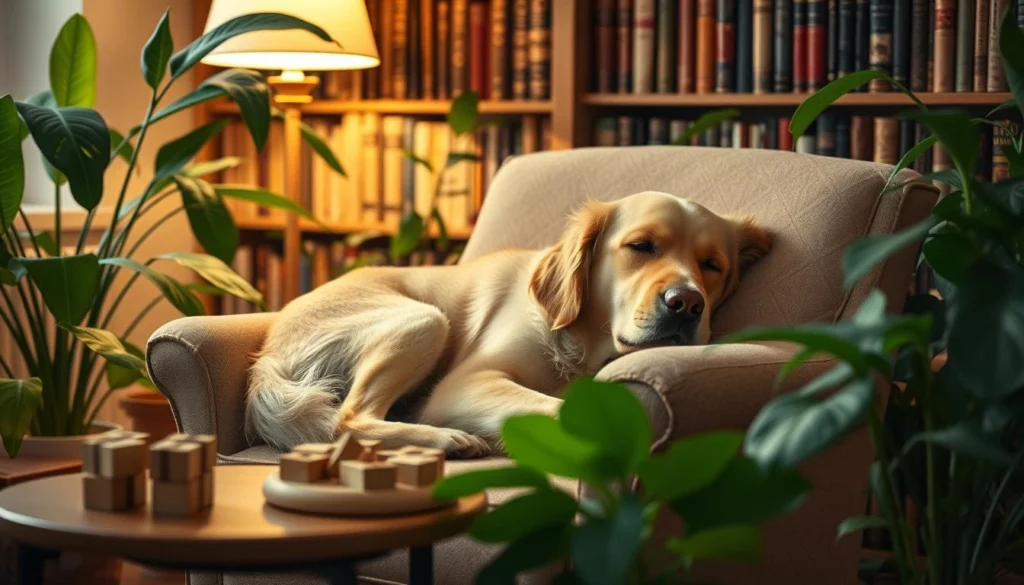
In this guide, we’ll walk you through the essentials of building a senior dog’s daily routine from nutrition and exercise to rest and enrichment. Whether your furry friend is showing early signs of aging or has been a golden oldie for a while, these tips will help you craft a balanced day that supports their unique needs.
Because your senior dog deserves not just more years but better ones.
An elderly dog’s daily schedule boosts their well-being. It gives them structure, which is good for their body and mind. By setting up a senior dog care routine, you meet their aging needs. This ensures they live a fulfilling and joyful life.
Table of Contents
Understanding the Needs of Senior Dogs
As dogs get older, they face many changes that affect their health. Having a health routine tailored to your senior dog is essential. This care is tailored to meet their physical and mental needs, helping them live comfortably.
The Importance of Tailored Care
Every senior dog is different, so a custom care plan is key. Making changes to their daily life can really improve their happiness. A good plan should consider their mobility, energy levels, and mental health.
By watching your pet and making adjustments, you can meet their needs well.
Physical and Mental Health Considerations
Maintaining both physical and mental well-being is vital for senior dogs. Maintaining physical health requires routine vet checkups, a balanced diet, and appropriate exercise. This helps keep them mobile.
Mental health is also vital. Senior dogs typically crave companionship and mental stimulation. Activities that keep their minds active and provide companionship can help fight loneliness and anxiety.
Establishing a Daily Routine for Your Senior Dog
Establishing a consistent daily routine is essential for keeping a senior dog happy. They love knowing what’s coming next. A set schedule makes them feel safe and happy.
Establishing Consistency in Schedules
Make sure your dog’s day is filled with regular activities. This means the same times for meals, walks, and play. It offers reassurance and helps alleviate their stress.
Keep your dog’s feeding times consistent every day. This helps their digestion and keeps their energy up. Walks should be before or after meals, depending on your dog’s energy level. Playtime should be regular too, to keep their mind sharp and strengthen your bond.
The Benefits of a Structured Day
A daily routine does more than just keep your dog happy. It also helps their physical health. Regular meals keep them healthy without overeating.
Outdoor walks help keep them strong and mobile. Playtime keeps their mind active, which is good for their brain. A routine that fits your dog’s needs makes them and you happier.
Daily Routine for a Senior Dog
Creating a daily routine is key for your senior dog’s health and happiness. Morning activities boost their mobility and mood. Mid-afternoon routines should offer comfort and rest. Tailoring these habits to your dog’s needs makes their day fulfilling.
Morning Activities to Kickstart the Day
Start with gentle walks or light play to help your senior dog wake up. Aim for 15-30 minutes, considering their pace and energy. Activities like slow fetch or interactive games keep them active and mentally sharp. Here are some morning activity ideas:
- Short, leisurely walks in the neighborhood
- Interactive play with soft toys
- Gentle stretches to improve flexibility
Midday Considerations for Comfort and Rest
As the day goes on, your senior dog may need more rest. They might need more downtime to recover. A cozy bed in a quiet spot helps them recharge. Here are some key things to keep in mind for a midday break:
- Designate a napping zone with comfy bedding
- Ensure access to fresh water and light snacks
- Incorporate brief training sessions to keep their minds active without overexerting them
Knowing your dog’s needs helps you balance their day with activity and rest. This improves their quality of life.
Feeding Your Senior Dog: Nutritional Needs
Knowing what your senior dog needs is key to their health. The right food is vital for their overall health and happiness. Look for high-quality ingredients that meet the needs of older dogs.
Selecting the Right Diet for Aging Dogs
Choose a diet with the right amounts of protein, fat, and fiber. Opt for foods made for older dogs. These are more digestible and full of nutrients.
- Real meat is the primary ingredient
- Healthy fats, such as omega-3 fatty acids
- Added vitamins and minerals for immune support
Setting Meal Times and Portion Control
Feeding your dog at the same time every day helps with weight and digestion. Try to feed your dog 2 to 3 meals a day. This helps your dog absorb nutrients better and prevents overeating.
Modify portion sizes based on your dog’s size and activity level. This is important for a healthy lifestyle.
Hydration: Importance for daily routine for a senior dog
Don’t overlook the importance of water for daily routine for a senior dog. Make sure they always have access to fresh, clean water. Senior dogs can get dehydrated easily, which can cause health problems.
Encourage them to drink by placing water bowls in easy spots. You can also use a pet water fountain to make drinking more appealing.
Regular Exercise: Maintaining Mobility and Health
Regular exercise is essential for an aging daily routine for a senior dog. It helps keep them active and healthy. Customizing their exercise to fit their needs is crucial, ensuring they stay engaged without overexerting themselves.
An elderly dog’s daily schedule should include exercises that boost their energy. These should also be safe for your dog.
Types of Suitable Exercises for Seniors
Choose low-impact exercises for daily routine for a senior dog. These are easy on their joints. Here are some good options:
- Leisurely walks: Short walks at a comfortable pace can help maintain cardiovascular health and keep your dog engaged with their surroundings.
- Swimming: This offers a great form of low-impact exercise, allowing your dog to maintain muscle strength without putting stress on their joints.
- Interactive play: Games like gentle fetch or using soft toys for tug-of-war can stimulate your dog mentally while encouraging light physical activity.
How to Monitor Your Dog’s Activity Levels
It’s important to monitor your dog’s exercise levels by observing their behavior and reactions. Here are some ways:
- Use a fitness tracker designed for pets to obtain real-time data on their activity levels.
- Keep an eye on any changes in your dog’s energy levels or their willingness to participate in activities.
- Take note of their recovery time after exercise; longer recovery may indicate a need to adjust their routine.
Establishing a balanced daily routine for a senior dog is essential. The right exercises and careful monitoring will help them enjoy their golden years.
Why Mental Stimulation is Crucial for Senior Dogs
Keeping your senior dog’s mind active is key to their happiness. A good senior dog wellness routine includes activities that boost their mental sharpness. These activities make your dog feel alert and joyful.
They also play a big part in the daily routine for a senior dog. These activities help keep their mind and hearts happy.
Engaging Activities You Can Do Together
Doing fun activities together strengthens your bond. Here are some activities to add to daily routine for a senior dog:
- Puzzle toys that encourage problem-solving
- Scent tracking games that utilize their natural hunting instincts
- Gentle training sessions that reinforce basic commands
- Interactive games like hide and seek to engage their sense of smell and curiosity
These activities challenge your dog’s mind and keep them physically active.
Choosing Appropriate Toys for Elderly Dogs
Selecting the right toys is vital for your senior dog’s mental well-being. Look for toys that are:
- Soft and easy to handle
- Designed with various textures and sounds to engage their senses.
- Sized appropriately to prevent choking hazards
Interactive toys that need little effort can keep your dog engaged without getting upset. The right toys can make your dog very happy, fitting well into the daily routine for a senior dog.
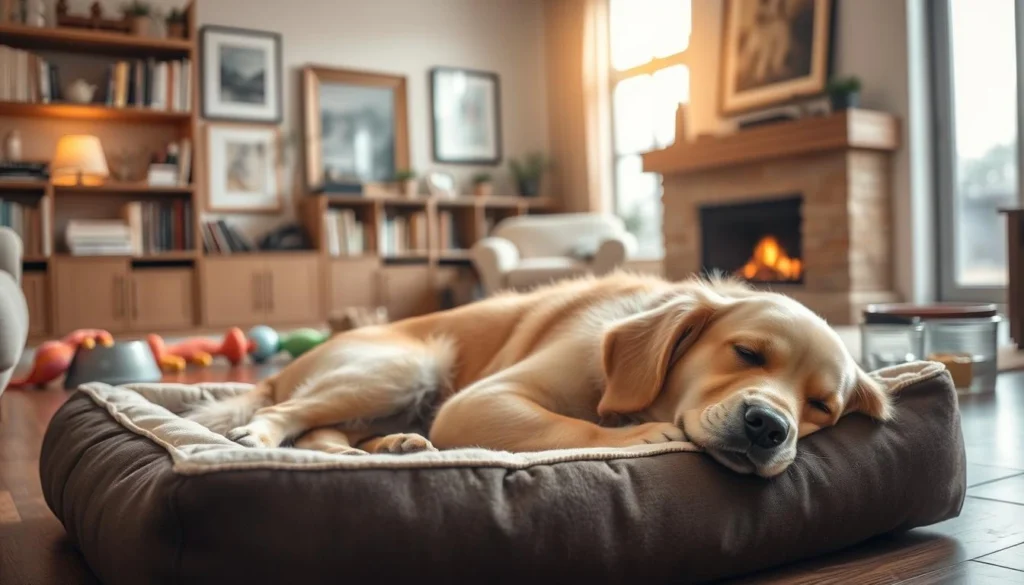
Routine Veterinary Checkups: Keeping Your Senior Dog Healthy
Creating a strong senior dog health plan is key to keeping your pet happy and healthy as they age. Regular vet visits are an essential part of this plan. They allow you to monitor your dog’s health and identify issues early
Visits to the vet can spot issues like arthritis, diabetes, or dental problems. This means you can get help right away.
Importance of Regular Health Assessments
Making routine health checks a regular part of your dog’s schedule is essential. These checks help evaluate your dog’s overall health. They include:
- Full physical examinations
- Weight assessments to monitor any significant changes
- Blood tests to detect potential underlying health problems.
- Urinalysis for kidney and bladder health
These steps help you understand the daily routine for a senior dog’s health. They can also stop bigger problems later on.
Vaccinations and Preventive Care
Maintaining your senior dog’s vaccinations is essential, as older dogs may have a weaker ability to fight off diseases. Vaccines protect them and help keep other pets healthy, too.
Don’t forget about preventative care like parasite control and dental care. These are important components of the daily routine for a senior dog health plan. Regular dental cleanings and parasite checks can prevent serious health problems.
Maintaining a Grooming practice daily routine for a senior dog
Regular grooming is crucial for maintaining your senior dog’s comfort and health. As they age, their skin can get sensitive. Using the right bathing and brushing techniques can have a big impact.
Bathing and Brushing Techniques
How often to bathe depends on your dog’s skin and lifestyle. Use warm water and mild dog shampoo to avoid irritation. Here’s how to bathe your dog right:
- Brush your dog before bathing to detangle fur and remove loose hair.
- Ensure your dog is comfortable in the bathing area.
- Use a mild scrub to cleanse without causing skin irritation.
- Thoroughly rinse to prevent residue, which can cause itching.
Brushing is needed several times a week. Here’s what to focus on:
- Select a brush that is appropriate for your dog’s coat type.
- Be gentle, especially around sensitive areas.
- Monitor your dog for any signs of discomfort during brushing.
Dental Care Essentials for Geriatric Dogs
Dental health is a crucial daily routine for a senior dog. They’re more likely to get dental disease, which can cause bigger health problems. Here’s how to keep their teeth clean:
- Brush your dog’s teeth regularly with toothpaste made specifically for dogs.
- Introduce dental chews that support oral health.
- Schedule professional dental cleanings according to your vet’s advice.
- Keep an eye out for dental problems like bad breath or trouble chewing.
Adding these grooming habits to your dog’s daily routine can keep them clean, comfy, and healthy.
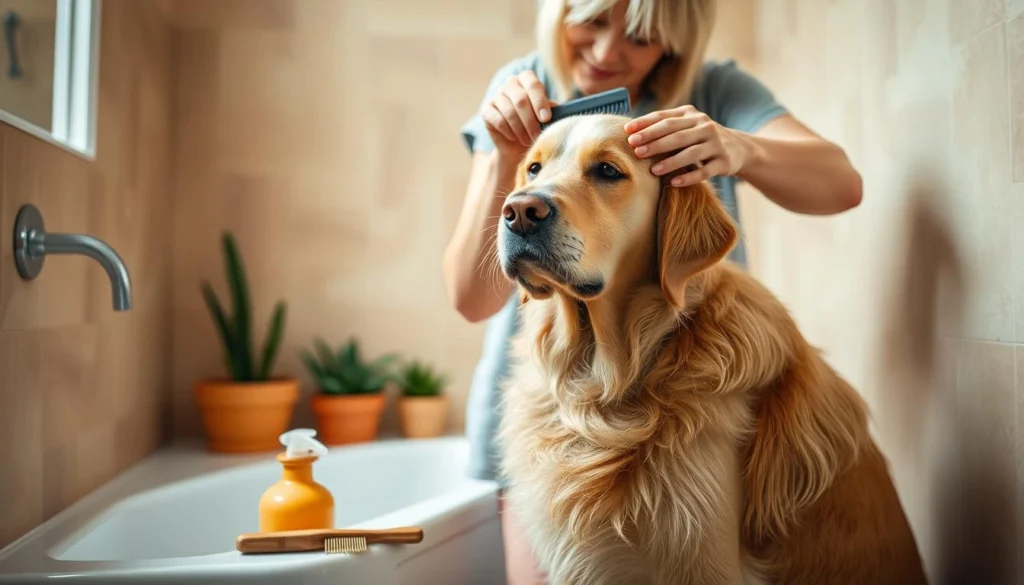
Creating a Comfortable Living Environment
Making a daily routine for a senior dog to feel at home is key to their happiness. A cozy environment supports their special needs. Thoughtful changes can greatly improve their life, making daily routines easier.
Adjusting Your Home for Senior Dog Needs
Older dogs may have trouble moving around. You can help by making your home safer. Use non-slip mats and easy-to-reach beds to prevent falls.
Adding ramps or steps helps them get to places they love. This helps improve their comfort and overall quality of life.
Must-Have Accessories for Comfort
Getting the right accessories can help. Orthopedic beds and cushions support their joints. Pet stairs help them access elevated areas more easily.
These changes make the daily routine for a senior dog at home better. They also fit into a good senior dog care plan.
Recognizing Signs of Aging in Your Dog
As your dog ages, you’ll observe changes in their appearance and behavior. Spotting these signs helps you make their life better. You can modify the daily routine for a senior dog to ensure they stay happy and healthy.
Physical Changes to Watch For
Keep an eye out for certain physical signs that show your dog is aging. You might see:
- Loss of vision or hearing.
- Joint stiffness or trouble moving.
- Weight changes, like losing or gaining it.
- Changes in the coat and skin.
- Less muscle in the hindquarters.
Behavioral Indicators of Aging
Behavioral changes are just as significant as physical changes. Look for these signs:
- Increased anxiety or restlessness.
- Changes in sleep patterns, such as excessive sleeping or difficulty falling asleep.
- Less interest in things that used to excite them.
- Wanting more attention or being clingy.
- Shifts in bathroom behavior, such as having accidents indoors.
Conclusion
A good daily routine for a senior dog is key to happiness and health. It meets their special needs, keeping them physically and mentally fit. Topics like food, exercise, mental games, and grooming all help a lot.
Customizing their care shows you love and care for them deeply. It helps them feel comfortable and happy as they age. In doing so, you improve their quality of life and make things easier for them.
Creating a daily routine for a senior dog shows you’re dedicated to their well-being. This helps them make the most of their golden years. It also allows you to enjoy more meaningful moments together.
FAQ
What does the perfect daily routine for a senior dog look like?
A leisurely morning walk is perfect for the daily routine for a senior dog. They also need regular meals and rest periods. Engaging in interactive play and providing evening comfort activities are essential. Staying consistent helps them feel secure and supported.
How can I ensure my aging dog gets enough exercise?
Choose low-impact activities like walking, swimming, or short play sessions. These activities help them move without getting too tired. Always watch your dog’s behavior to adjust the schedule as needed.
What should I look for in my senior dog’s face and body for signs of aging?
Look for graying, less muscle, and joint stiffness. Also, watch for changes in their behavior and sleep. These signs can help you adjust your daily routine for a senior dog for better care.
Are there specific dietary considerations daily routine for a senior dog?
Yes, senior dogs need a special diet. Look for food that’s lower in calories but higher in fiber. It should also support joint health and manage any health conditions.
How often should senior dogs visit the vet?
Your senior dog should have a veterinary check-up every 6 months. Regular checkups help catch health issues early. This allows for timely care and adjustments to their routine.
What types of mental stimulation activities are appropriate for daily routine for a senior dog?
Activities such as puzzle toys, light training, and scent games are excellent. They help keep the dog’s mind active and enhance your connection. Short, interactive play sessions are also beneficial.
How can I modify my home for my senior dog’s needs?
Make your home senior-friendly with non-slip mats and orthopedic beds. Ramps can help them access furniture easily. A comfortable and safe home improves their quality of life.
What grooming practices are important in the daily routine for a senior dog?
Regular grooming is key to a senior dog. Use gentle bathing and brushing techniques. Also, keep their teeth clean to prevent dental disease, which can lead to other health problems.
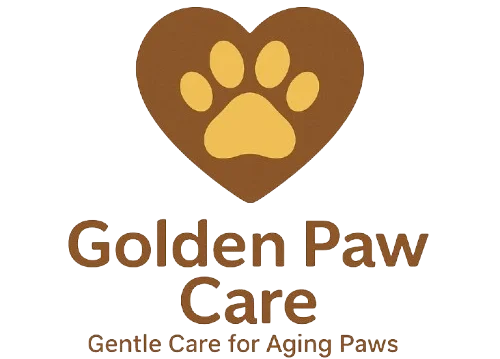
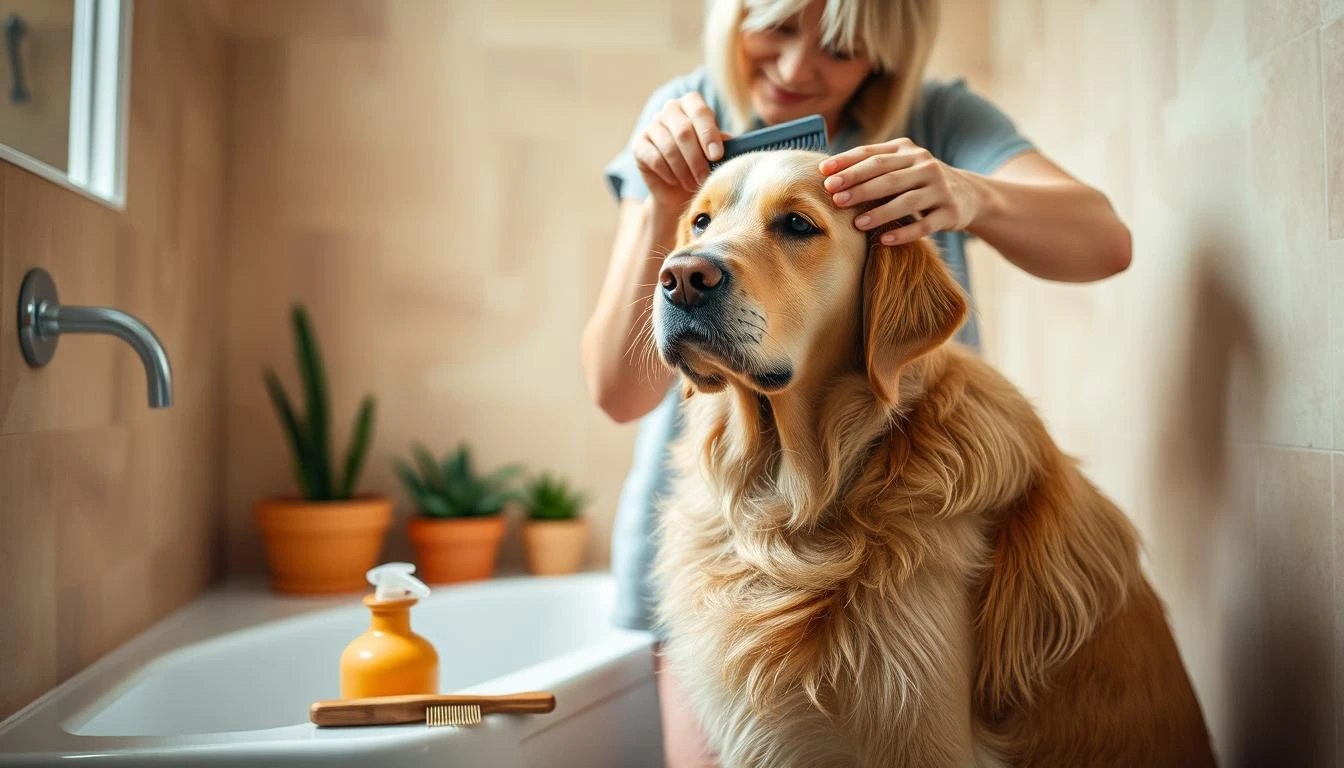
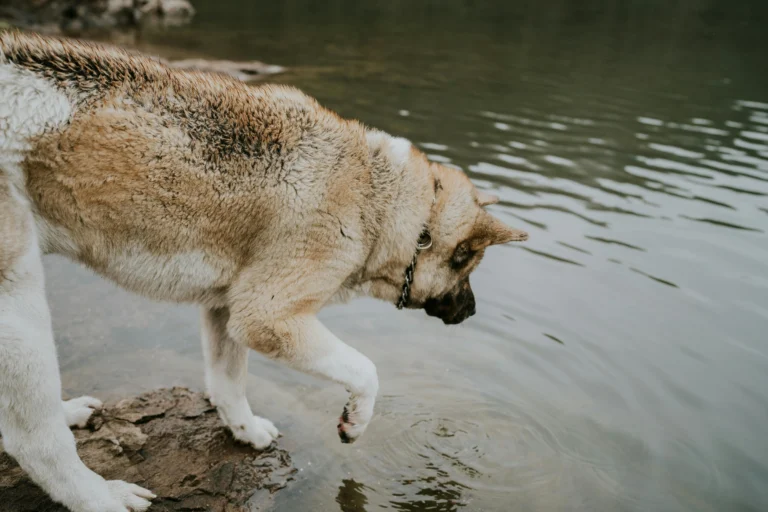
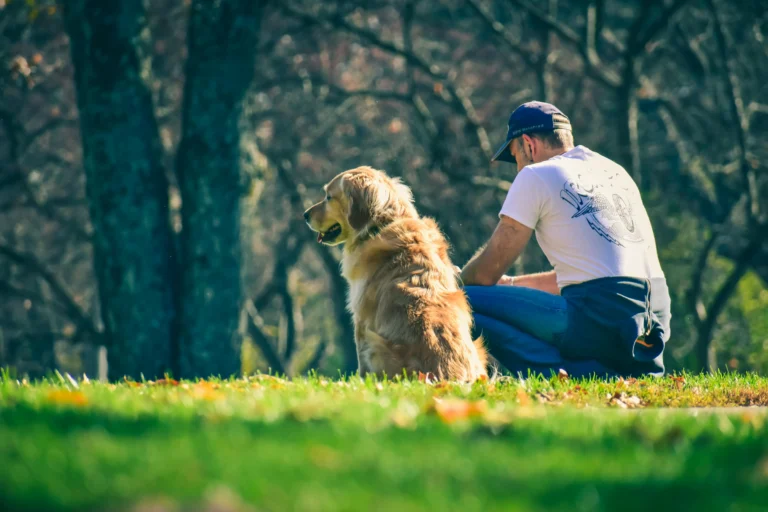

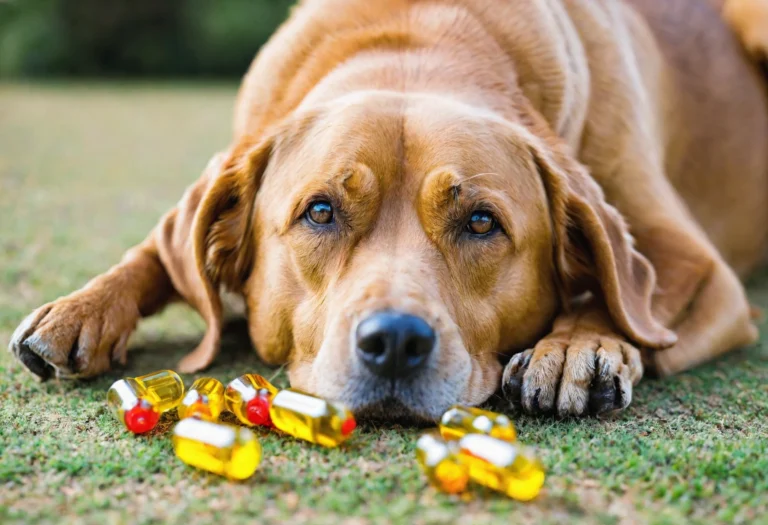
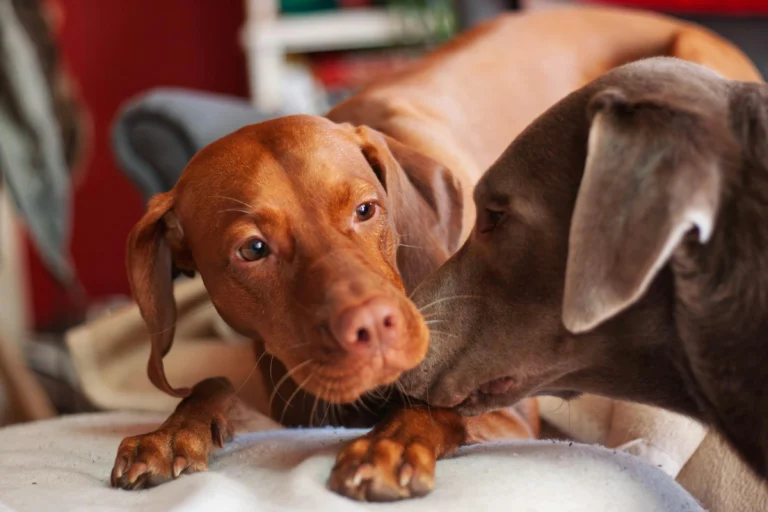
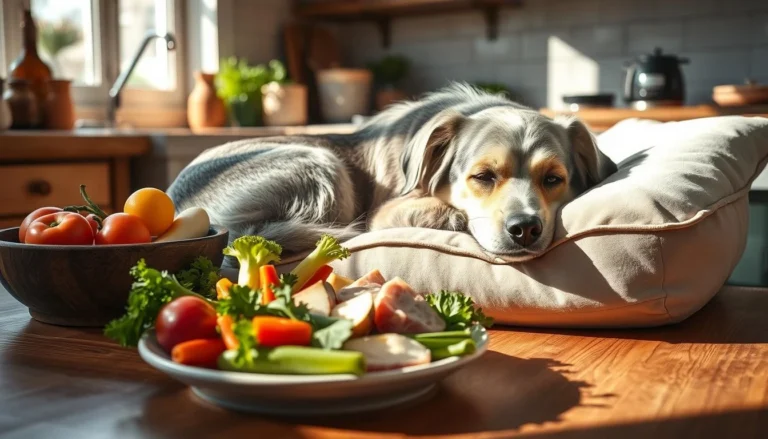
2 Comments